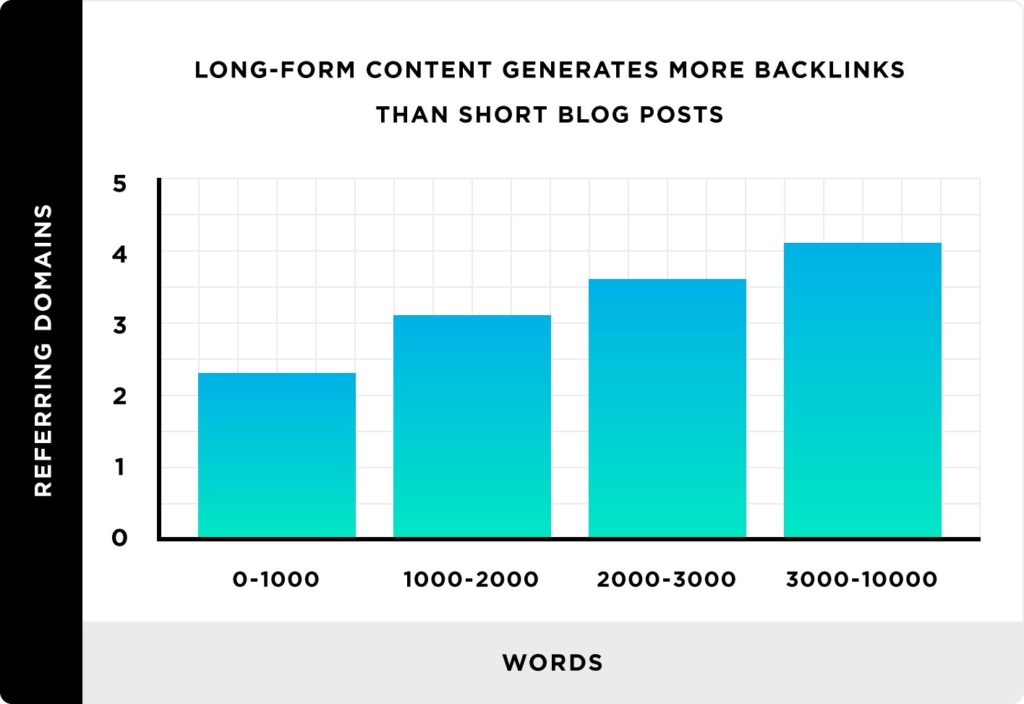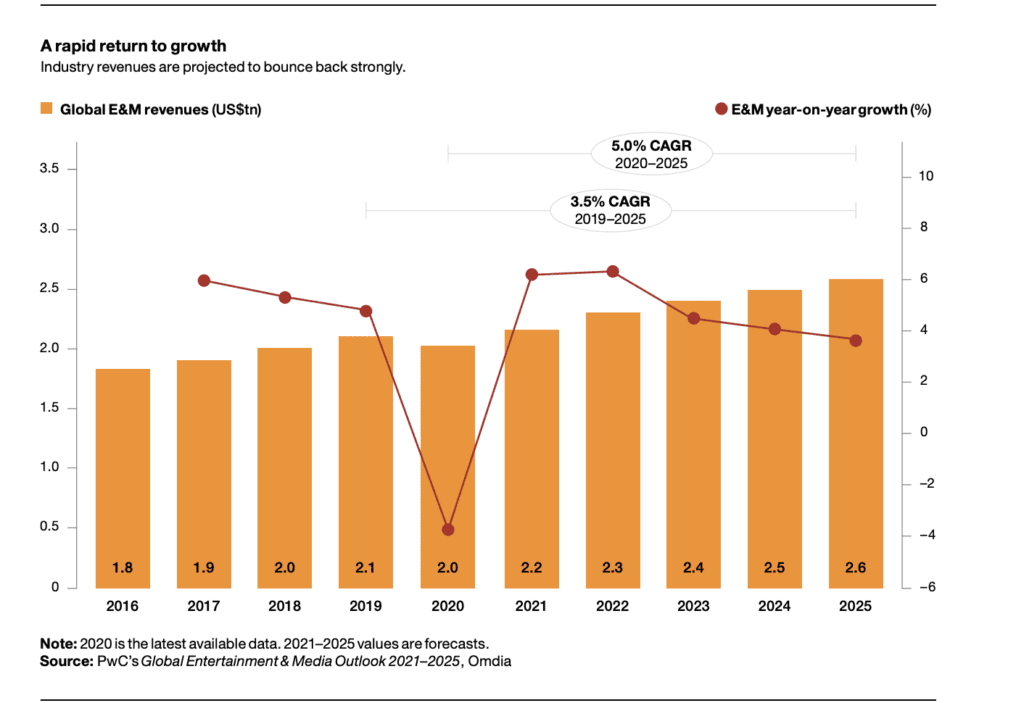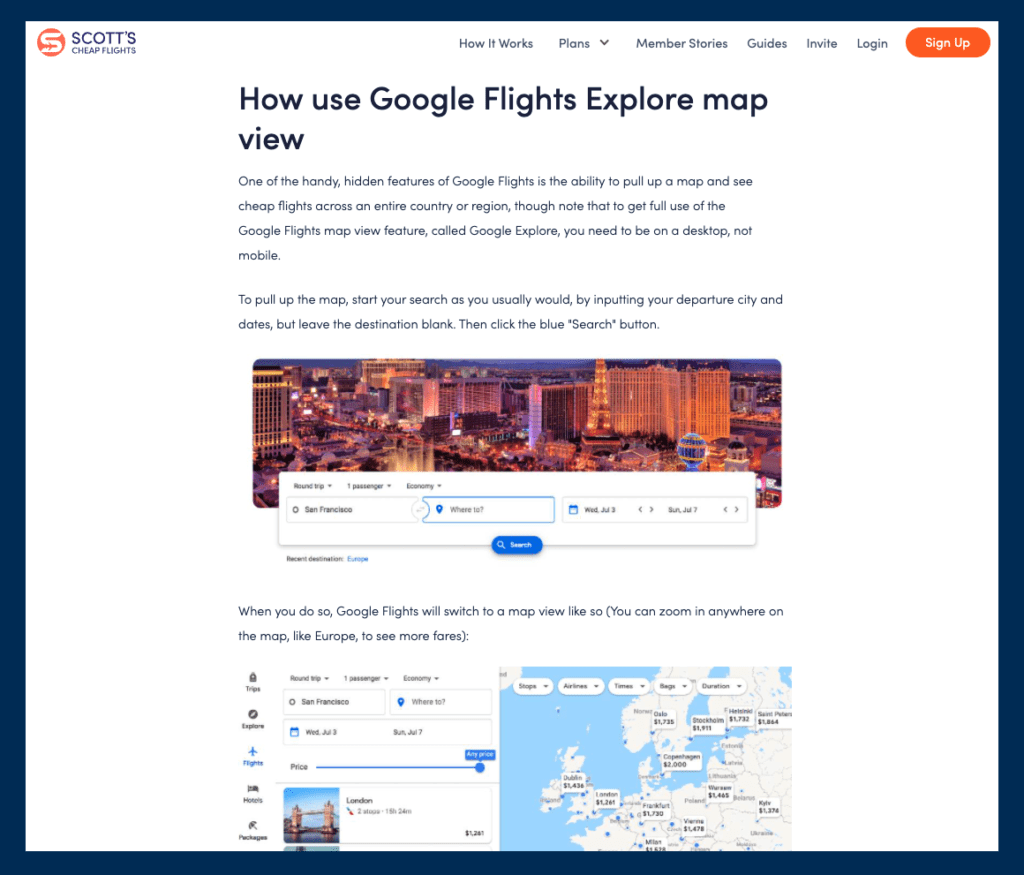Small and medium-sized business owners tend to face a lot of confusion around the ideal word count for a piece of written content on their website or blog. Data from the past five years shows a steady increase in the length of published posts. And, it seems that the change is happening with good reason.
In 2017, for example, the average article length fell somewhere between 500 and 1,000 words, with less than 10% of bloggers investing in long-form (2,500+ words) articles.

Today, on the other hand, things are looking very different. According to research from Orbit Media, 63% of bloggers are publishing posts that exceed the standard 1,000-word count, with 30% to 36% of those who go above 1,500 words reporting “strong results.”

But while the data suggests that long-form content performs better in today’s digital marketing landscape, we can’t conclude that marketers simply need to write more in 2021. On the contrary – they must learn when and how to invest in long-form content to get the absolute most out of it without wasting resources on producing sub-par material that does nothing but run on and on.
So, how can you make the most out of your digital distribution platforms with long-form content that excites readers and delivers results? This guide looks at everything you need to know before you start making long-form an integral part of your digital marketing strategy.
What Is Long-Form Content?
Like a bunch of other digital marketing concepts, long-form content does a beautiful job of evading definition.
To some, long-form content is any piece of written content that exceeds a word count of 750. To others, the label is reserved for those articles that go beyond 2,500 or even 3,000 words.
In truth, there is no universal answer. Every single format adheres to different standards, which is only natural. After all, there’s no way of comparing a detailed case study with a simple “what is” blog post that gives readers a quick way to gather information and only scratches the surface of a topic.
So, before we go into the ways to get the most out of long-form content on your website, let’s agree not to use labels in the form of word counts. Instead, we’ll agree right here that the way to define long-form content is to call it any written piece that does justice to a topic by paying sufficient attention to every single detail, and successfully answering reader questions.
The Benefits of Publishing Long-Form Content
Although defining long-form content may be challenging, identifying its benefits is anything but.
Research has shown time and again that well-written (and well-researched) pieces offer a multitude of advantages for those ready to do the work.
SEO
One of the most significant gains you unlock when publishing long-form content on your website is that it helps you boost your brand’s visibility on Google.
In the simplest of terms, a longer article body allows for better search engine optimization, giving you the opportunity to:
- Fit in your focus phrase (naturally) without reverting to tactics such as keyword stuffing
- Optimize your copy for synonyms and long-tail variants
- Boost readability with multiple headings, internal and external links, and multimedia
- Win Google’s Featured Snippets position
Of course, you can do all of these things with short articles as well. However, research shows that the average word count for first page results on Google lands at 1,447 words, proving that taking the time to produce long-form content pays off in terms of SEO.
Generate Authority for Your Brand
Investing in high-quality content has been proven to be one of the best ways to position your brand as an authority in your field.
By focusing your production efforts on in-depth content, you’re effectively sharing your insights and know-how with audience members looking for value.
For example, imagine a person looking for an explanation of different email authentication protocols. If they land on this article by Sendinblue, they’ll walk away with the impression that the brand behind the piece knows what it’s talking about. (And, even if the reader is not yet looking for an email marketing platform, they’re sure to remember that they once read a helpful piece published on the brand’s blog.)
Get Backlinks and Boost Social Media Shares
If you’re still not persuaded about the benefits offered by long-form content, you’re sure to be convinced by the following two statistics from Backlinko’s analysis of 912 million blog posts.
According to the brand’s research, long-form content outperformed shorter pieces, both in backlinks and social media shares.
It turns out that pieces that are 3,000+ words long get an average of 77.2% more backlinks than shorter articles. Moreover, the sweet spot for maximizing social shares falls between 1,000 and 2,000 words, further proving the benefits of investing in long-form content.

Validate Talking About Your Product
One of the challenges of getting the most out of your content marketing strategy is that blog posts aren’t always the ideal place for a sales pitch – especially if you’re targeting search terms that aren’t directly related to your products and services.
Fortunately, with long-form content you can match the user intent, provide value, and squeeze in some space to call the reader’s attention to the benefits your brand offers. Plus, you get to do all of this without coming off as too sales-y.
This is what TimeTackle does with its guide to creating an editorial calendar. Explaining the process and highlighting the best products for planning a content strategy, the brand’s writers managed to find a clever way to mention TimeTackle’s app in a section that explores the benefits of Google Calendar to assign, track, and schedule content distribution.
It’s a logical continuation of the topic, which means that it provides readers with relevant info. Yet, it manages to create a space for the brand to pitch its products without coming off as pushy.
Win the Goodwill of Your Readers
Finally, as we look into the benefits offered by long-form content, don’t forget to consider that people love it when brands are helpful.
Studies have revealed that consumers choose to support the brands that offer the most value, which shows that sharing your knowledge and unique insights pays off in the long run.
If you have the resources (and know-how), investing in educational content, sharing your expertise, and empowering your readers is an excellent way to approach your content creation strategy.
How to Create Winning Long-Form Content
Now that you understand everything you stand to gain by rolling up your sleeves and getting down to some serious content production, it’s time to start writing.
Here are the five steps to producing long-form content that’s sure to get you noticed by your target audience.
1. Know What Your Readers Want to Read About
Before you start putting words to paper, you will have to go through a preparatory phase. That’s why your first step for creating content that cuts through the noise is to do your research and to do it well.
One of the best ways to ensure your content brings results is to optimize it for user search intent. And, it’s worth mentioning that long-form content works particularly well for informational search intent.
Informational intent refers to cases in which web users search for knowledge. They need answers to questions or guides to solving pain points. And while they’re still in the awareness stage of the buyer’s journey (meaning that they’re not yet ready to make a purchase), serving the right content can efficiently capture them as leads and speed up their path from information-gathering to buying.
Understanding informational search intent and how to optimize content for it is a great way to get more out of your long-form articles:
- For example, you can obtain a coveted SERP position by using certain search terms in the article’s title, sub-headings, and body like “how to,” “guide,” “what is,” “best way to,” etc.
- By organizing your content in a way that gets to the point early on, then goes into detail, you’ll grab user attention. Additionally, you’ll encourage visitors to stick around on your page until the end of the article, signalling to Google that your content is a good match for the intended search intent.
- Finally, by providing high-quality, actionable information, you’ll have given your readers everything they wanted, effectively boosting your brand’s authority and helping you become the leading resource in your niche.
As a great illustration of a long-form piece that checks all the boxes, check out this guide on the best way to learn guitar by Play Guitars.
Understanding that it’s a complicated topic, the writer behind this article made the smart decision to optimize for search intent with the correct keywords, an outline at the beginning of the piece, and by visually organizing the post into scannable sections.
2. Don’t Hold Back on Detail
When it comes to the value that long-form articles offer, the thing that makes them relevant is the abundance of detail they deliver. When producing long-form content, creators should do their best to enrich their posts with as much new, helpful information as possible.
The fact is, most of what is found on the internet today is a remake – a sort of retelling of information found somewhere else. And while it is possible to turn such content into a tool for driving organic traffic and boosting brand authority, the effect it produces is nowhere near that of truly original content.
For a great example of how the perceived value differs between recycled and original long-form content, compare the following two posts by Semrush.
On the one hand, check out the brand’s overview of mobile marketing statistics collected through different sources already available online. On the other, look at the original study conducted by Semrush’s team on the difference between mobile and desktop trends in SEO.
A quick check shows how much better the original study performs compared to the roundup article. Despite a shorter word count, it has:
- Scored an Ahrefs URL rating of 44 vs. 30
- Earned 628 backlinks vs. 142
- Secured 318 referring domains vs. 90
This just goes to prove that detailed, helpful, and original information performs better than article length on its own.

3. Check the Readability
Okay, but what should you do if you have already written some long-form content and you want to update it to serve your audience (and your business) better?
Well, a simple hack would be to check and improve the readability score of your article.
It’s well-known that internet users prefer to scan than versus fully read content online. So, it’s only natural that creators should aim to produce articles, which are scannable, to the point, and successful at engaging readers.
Knowing that big walls of text alienate readers, writers should implement chunking techniques that effectively break up concepts into bite-sized chunks of information that are easier to read, understand and remember.
Great ways to do this include:
- Using bullets
- Implementing subheadings
- Shortening sentences and paragraphs
- Utilizing formatting to guide the reader’s attention (for example, by bolding for emphasis)
- Including multimedia to illustrate complicated concepts
For an excellent example of a page that does all this, check out this 5,000+ word guide on learning to code from Skillcrush. This page effectively manages to grab and retain user attention, despite the massive amount of information it covers, thanks to strategically using headings, a table of contents, bulleted lists, as well as a large font size coupled with generous negative space.

If you’re looking to improve the readability of your existing long-form content, the best way to go about it is to utilize free online tools like Readable, Hemingway, or the readability checker for WordPress by Yoast.
4. Supplement with Multimedia
Research shows that people respond much better to visuals than to words alone. That’s why multimedia is such a valuable addition to your long-form content.
Using the right photos, illustrations, videos, and even audio files can help your audience get more out of your articles. Plus, it can help you communicate information more effectively and offer something more than your competition.
A great way to present data is through infographics, which are an excellent tool for providing a visual dimension to the information you’re offering to your audience. A company that does this rather well is PWC, whose reports strategically use visuals to improve the effectiveness with which they communicate technical information.

If you’re looking for a slightly different approach, know that you can get equally beneficial results by simply including videos and screenshots in your long-form articles, as exemplified in this Google flights guide by Scott’s Cheap Flights.
The writers of this article understood that everyone processes information differently, leading them to produce a guide that works for both auditory and visual learners. This is achieved thanks to an abundance of annotated screenshots that instruct the reader on how to use the Google Flights app.
But, what’s interesting is that the content creators also knew that video had the potential of engaging more people. So, they created a video summary of the article on the page, allowing readers to consume all the contained information in just eight minutes. All the while, they can follow the audio instructions and go through the discussed steps in real-time.
5. Get Creative with Different Content Formats
Finally, as you look for ways to create winning long-form content for your website, remember that it’s not just standard blog posts that can get you the results you’re after.
By mixing things up – especially with various content formats – you can widen your offering and keep your audience interested, engaged, and constantly coming back for more.
Excellent alternatives to standard articles to explore for long-form content include:
- Information roundups – provide readers with an easily accessible resource for all the data relevant to their query, like this collection of remote work statistics from Flamingo.
- Inspiration resources – give website visitors ideas on how to resolve their pain points, like this Instagram captions article from Sixads.
- Step-by-step guides and tutorials along the vein of WikiHow’s guide on how to tie a tie (which expertly uses a combination of text, images, GIFs, and videos).
- Case studies – the one content format trusted by most people (60% according to Statista), giving you the perfect opportunity to present new information to your audience. HubSpot has an entire content section devoted to customer success stories.
- Definitions of niche terms and concepts – the perfect format for reaching audiences at the very top of the awareness stage of the buyer’s journey as well as for positioning your brand as the answer to all their future needs in your industry. B&H Photo offers a terrific example with their extensive glossary of photography terms.
Getting Long-Form Content to Work for Your Business
The great thing about investing your time and resources into producing high-quality, original, helpful long-form content is that it has the potential for impressive returns.
An exceptional piece of writing won’t just help you wow the people who land on your site or blog. If you consistently deliver valuable, insightful, and unique articles, you are sure to reap the longterm benefits for both your website and your business.
So don’t be afraid of giving long-form articles a try. Start with one or two – preferably by covering pillar topics for your site. You’ll see, the longer form factor won’t take long to get used to. But it’s sure to deliver results – whether you’re after a boost in your reach, increased sales, or simply engaging with more of your followers.





